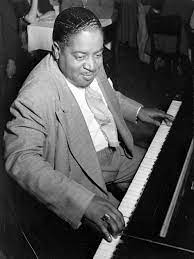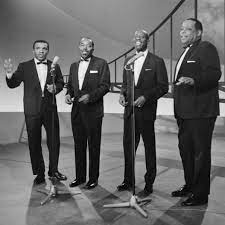Genre:
Gospel and Blues – to swing
The Year of 1939:
On the great day of December 24, 1939, the most magnificent concert took place at Carnegie Hall! The concert traced the evolution of black music from spirituals and blues up to Count Basie. The Spirituals to Swing’ Concert at Carnegie Hall in New York celebrated the contribution that African-American musicians had made to popular American culture over the previous decades. The Blues had grown up in the South as a folk music that documented the hard life of sharecropping field hands.
In the 1930s, big bands and swing music were widespread, with Duke Ellington, Benny Goodman, and Glenn Miller as popular bandleaders. In the 1940s, the bands started to break up, and band singers like Frank Sinatra and Sarah Vaughan went out on their own. War songs became popular.
The year 1939 was a time when people were able to witness new developments and releases from many artists. In 1939, Billie Holiday recorded “Strange Fruit,” a haunting and powerful song that addressed the issue of racism and lynching in the United States. The song is considered one of the earliest examples of protest music and remains a landmark in jazz history.
How to listen to spiritual:
Explore Related Genres:
Expand your musical palette by exploring related genres such as free jazz, avant-garde jazz, and world music. Spiritual jazz often incorporates elements from various musical traditions.
Read About the Music and artist:
Read about the artists and albums to gain insights into the inspirations, motivations, and influences behind the music. Understanding the background can enhance your appreciation.
Explore Jazz Artists to find what you like:
Start by exploring the works of key artists in the genre. Some influential figures include John Coltrane, Pharoah Sanders, Alice Coltrane, Sun Ra, and Albert Ayler.
How to listen to swing:
Understand the Basics of Swing:
Swing is a style of jazz that emerged in the 1930s and 1940s. It is characterized by a strong rhythmic feel, syncopation, and a focus on improvisation. Familiarize yourself with these basic elements.
Listen to Iconic Swing Bands:
Enjoy the music of iconic swing bands. Each band has its unique style and sound. For example, Count Basie’s band is known for its relaxed and bluesy feel, while Benny Goodman’s orchestra is celebrated for its precision and energy.
Learn About Swing Dance:
Swing music is closely tied to various styles of swing dance, such as the Lindy Hop and Charleston. Learning about these dances can deepen your appreciation of the music and its connection to social dancing.
The Concert:
The concert was groundbreaking in its effort to bring together different genres of African-American music and showcase their interconnectedness and evolution. It played a significant role in breaking down racial barriers in the music industry and promoting the acceptance of jazz as a legitimate and influential art form.
The “Spirituals to Swing” concert is considered a landmark event in the history of American music, reflecting a pivotal moment in the recognition of African-American contributions to the cultural tapestry of the United States. It shaped perceptions of jazz and paved the way for greater acceptance and integration of black musicians in the broader music industry.
What you'll see when listening to Spirituals to Swing:
Count Basie Orchestra – “Swing, Brother, Swing”:
This recording captures the energetic and swinging style of the Count Basie Orchestra, one of the leading big bands of the swing era
Benny Goodman – “Sing, Sing, Sing” (featuring Gene Krupa):
Benny Goodman’s performance of “Sing, Sing, Sing” is iconic and showcases the high-energy, danceable qualities of swing music. Gene Krupa’s drum solo in this recording is particularly famous.
Sister Rosetta Tharpe – “Rock Me”:
Sister Rosetta Tharpe’s soulful and expressive rendition of “Rock Me” highlights the connection between gospel and early rock and roll. Tharpe was a trailblazer in blending spiritual and secular music.
Big Joe Turner – “Roll ‘Em Pete” (with Pete Johnson on piano):
This performance features the bluesy vocals of Big Joe Turner and the boogie-woogie piano of Pete Johnson. It reflects the blues and boogie-woogie influences present in the “Spirituals to Swing” concert.
Meade Lux Lewis – “Honky Tonk Train Blues”:
Meade Lux Lewis was a boogie-woogie pianist, and this recording of “Honky Tonk Train Blues” is a classic example of the energetic and rhythmic piano style that was influential in early jazz
Lionel Hampton – “Wizzin’ the Wizz”:
Lionel Hampton, a master of the vibraphone, showcases his virtuosity in this recording. The tune features lively improvisation and reflects the spirit of experimentation present in the concert.
Contributed Artist :
Count Basie
Benny Goodman
Big Joe Turner
Pete Johnson
Helen Humes
Meade lux lewis
Albert Ammons
Mitchell’s Christian Singers
the Golden Gate Quartet
James P. Johnson






